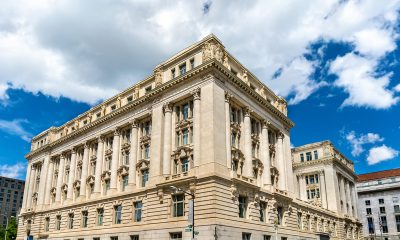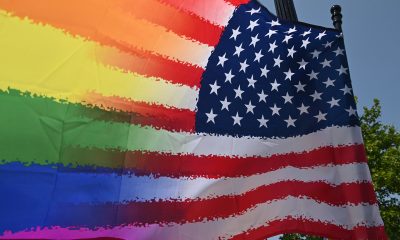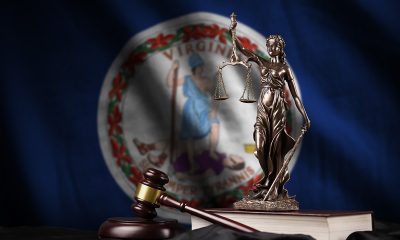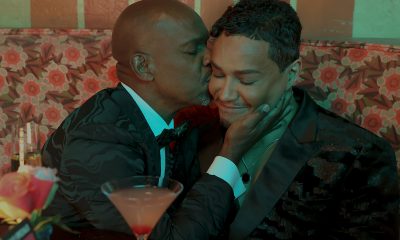a&e features
2021 Queer Women of Washington
Celebrating voices of change in D.C.

The Washington Blade, in partnership with the Mayor’s Office of LGBTQ Affairs and the Office of Women’s Policies and Initiatives, is proud to present our annual Queer Women of Washington.
Here we celebrate some of the city’s many inspiring queer women who are the voices of change from a diverse group of industries. Nominations came from our readers; that list was then trimmed to the queer women profiled here.
Rewatch the Queer Women of Washington Awards presented by DC Department of Health HERE.
Meg Metcalf
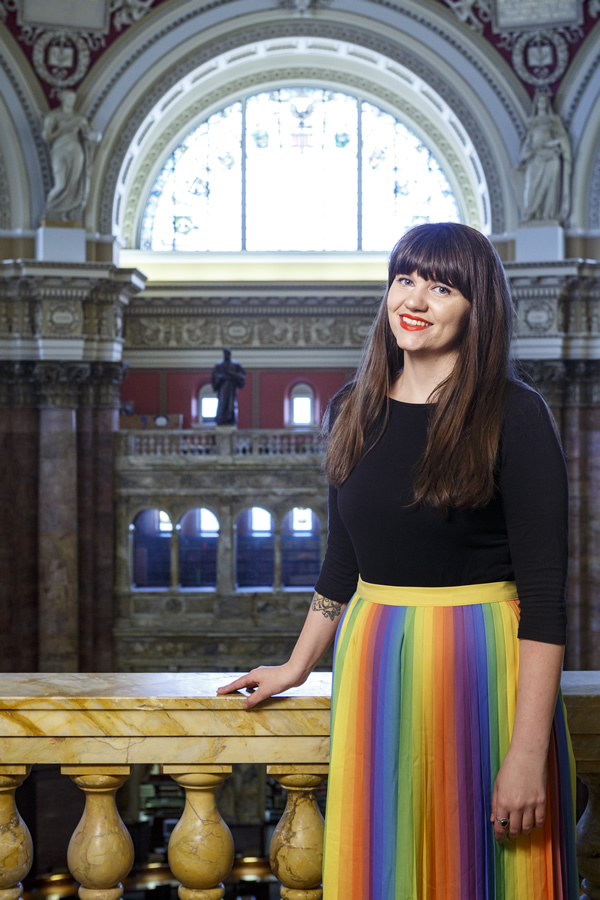
Occupation: Library of Congress (Librarian & Collection Specialist, Women’s, Gender, & LGBTQIA+ Studies)
Where do you live? Ward 5
What does being a queer woman in Washington, D.C. mean to you?
Being a non-binary queer femme in Washington, D.C. has given me an unparalleled opportunity to influence the way cultural memory institutions document and remember LGBTQIA+ life, history, and cultures in our nation’s capital and beyond. What happens in D.C. resonates nationally and globally, so it’s a wonderful place to live and work as a librarian, activist and advocate.
Michele Zavos
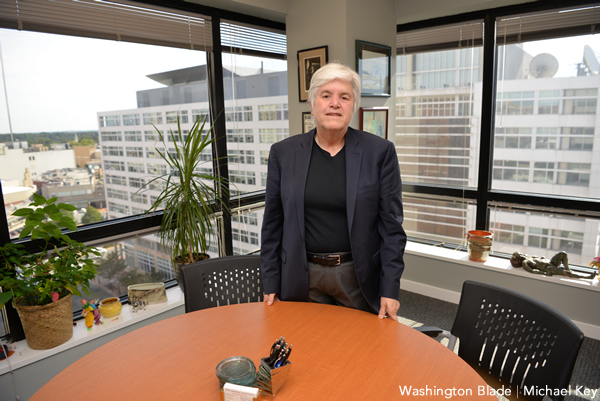
Occupation: Zavos Law
Where do you live? Ward 5
What does being a queer woman in Washington, D.C. mean to you?
I identify as a lesbian, as I have my entire adult life. That identification to me means a certain way of looking at the world, as a woman who loves and prioritizes women.
D Magrini
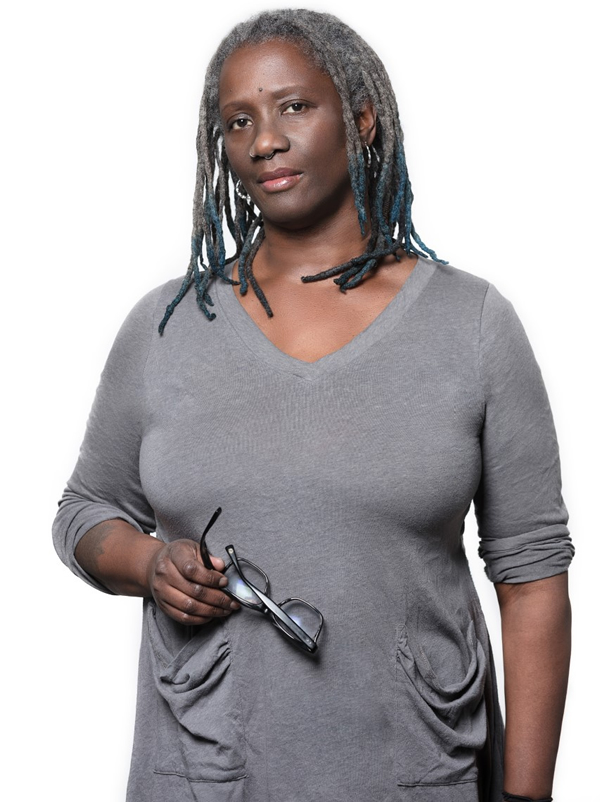
Occupation: Whitman-Walker Health
Where do you live? Ward 3
What does being a queer woman in Washington, D.C. mean to you?
A native Washingtonian proudly being myself.
Yvette Scorse
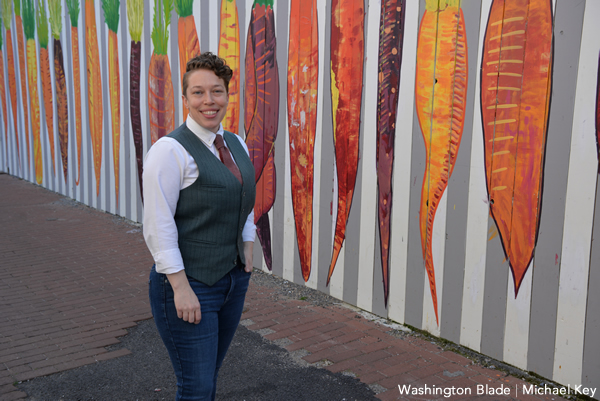
Occupation: Communications Director, ByteBack
Where do you live? Ward 6
What does being a queer woman in Washington, D.C. mean to you?
Being a queer woman in Washington, D.C. is about more than embracing and enjoying my own identity and love openly. It’s about celebrating other LGBTQ+ people, about nurturing a safe and welcoming environment for my colleagues, and it’s about putting equity and inclusion first in our community. I’m proud to be among a group of diverse, strong, creative, inspiring queer women in D.C.
Tiera Craig
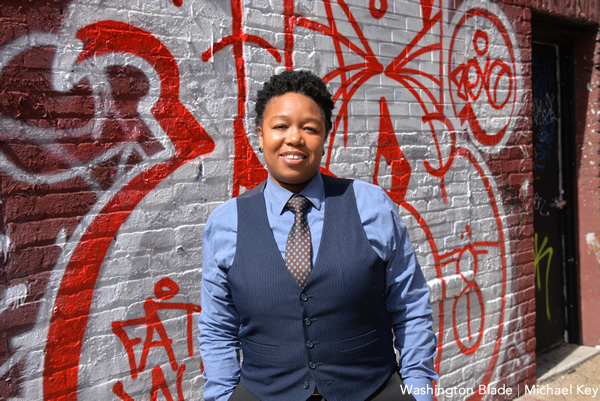
Occupation: The DC Center
Where do you live? Ward 3
What does being a queer woman in Washington, D.C. mean to you?
I am a proud Black combat service disabled veteran lesbian professional committed to the LGBTQ community and passionate about All Things Lesbian. I strive to represent, educate, encourage, and empower members of the community in any way necessary. Being a queer woman in Washington, D.C. means that I have a greater opportunity to affect change on a micro and a macro level. It means that I am in a position to have my finger on the pulse of transformation in policy. It also means that I am a part of the dopest community in the country!
Sunu P. Chandy

Occupation: Legal Director, National Women’s Law Center
Where do you live? Ward 3
What does being a queer woman in Washington, D.C. mean to you?
While we are lucky to be queer women in D.C. given all of our local legal protections for LGBTQ individuals, we also need to push the U.S. Senate to pass the Equality Act so that our rights in this country don’t depend on our zip code. We also need to keep organizing and advocating for social justice across the areas of our lives here in D.C. too. I am excited to keep building, alongside so many terrific comrades, toward gender justice, racial justice, disability justice, immigration justice and more.
Cee Smith

Occupation: Color Wheel Capital
Where do you live? Ward 5
What does being a queer woman in Washington, D.C. mean to you?
Being a queer woman in D.C. means that I’m a part of a small but mighty percentage of the population that’s known to overcome despite the disparities. It means working daily to advance a community I believe in.
Heidi Ellis
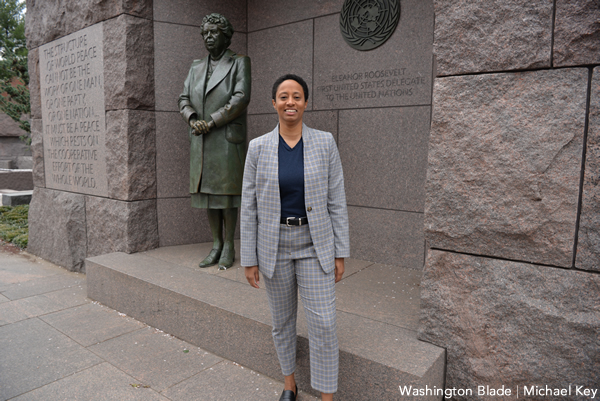
Occupation: Founder, HME Consulting & Advocacy
Where do you live? Ward 6
What does being a queer woman in Washington, D.C. mean to you?
My identity has always been my compass as I’ve navigated different spaces throughout my upbringing, education, and career. For me, it’s not about only being a woman, or queer, or Black, or Latinx. I am all of those things. The experiences I have occupying space as a woman with an intersectional lens dictate my priorities when allocating some of my most precious resources, including time, money, and my mental capacity. I am dedicated to building coalitions and improving systems that will ultimately lead to liberation for the most marginalized members of our community. I feel inspired living in Washington, D.C., as we are uniquely able to see the progress, and sadly the failures, of our government and the power structure. Local culture and history also inspire me. D.C. is a treasure trove of historical events and stories that influence our community, and I hope to continue learning while adding to the rich history.
Charlotte Cleveland

Occupation: American College of Surgeons
Where do you live? DMV Area
What does being a queer woman in Washington, D.C. mean to you?
Being a queer woman in Washington, D.C. means being a part of a profoundly embracive, proud, diverse, and welcoming community. By nature, it means I get to be both national and local. We live at the epicenter of American politics, which can be an ugly and treacherous space to exist as a queer person and we see the progress, and failures, of our government in real-time. This allows me to use my voice and uplift the voices of others to advocate for change. On the local level, D.C. is one of the queerest cities in America and I can unabashedly be my queer self every day.
Morgan Butler
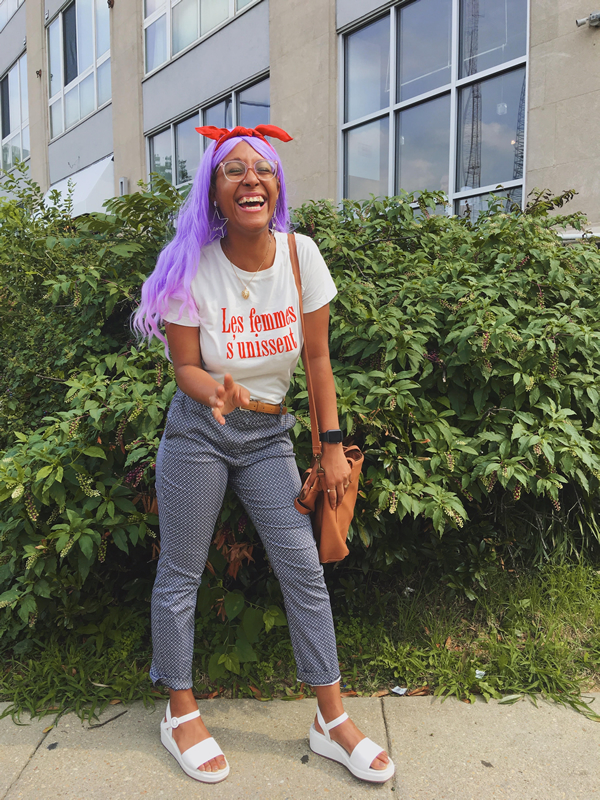
Occupation: Public Allies DC
Where do you live? Ward 4
What does being a queer woman in Washington, D.C. mean to you?
So much of my gender identity, sexuality and spirit has been nurtured and influenced by D.C. As a gender fluid femme queer, it’s been important for me to acknowledge all my selves, to care for them, to inspire them, to reparent them and heal them from childhood wounds. D.C. has been the safest place for me to reparent myself — this city has provided me and (with extreme reverence) allowed me to provide platforms and opportunities for others to experience the beautiful, whimsical, magical, intense heat that quite honestly, no other city has. The way D.C. is continuously birthing renaissance astounds me every moment of every day. The way this city breeds and nurtures talent is something I intentionally try to emulate in every space I’m welcomed in outside of the city. My work is so intrinsically connected to this city, in the same ways that my person and my spirit is.
Aditi Dussault
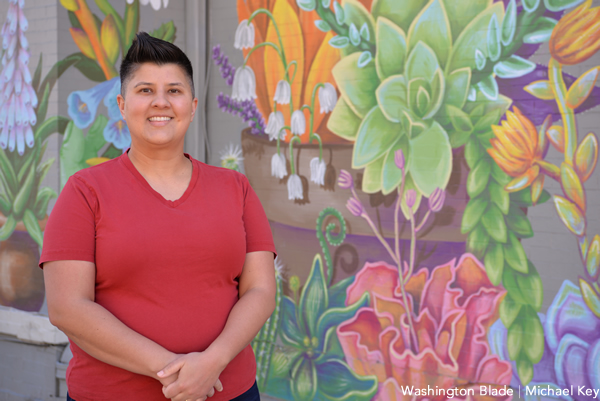
Occupation: Co-Founder & Director, GovContractPros, LLC
Where do you live? Ward 1
What does being a queer woman in Washington, D.C. mean to you?
I first moved to D.C. to attend college – a somewhat typical story of “finding myself” in a new place. My favorite part of being queer in D.C. is not only have I found myself, but also I have found so many amazing people who are so different from me. In finding and exploring differences, I have found incredible threads of commonality and I think D.C. is particularly unique city for bringing it all together.
Melissa DeShields

Occupation: CEO, Frontline Solutions
Where do you live? Ward 4
What does being a queer woman in Washington, D.C. mean to you?
Being a Black queer woman in Washington, D.C. means that I live in the intersection of race and identity. My work, my politics, my life is about justice and dismantling systems of oppression.
Ashley Carothers
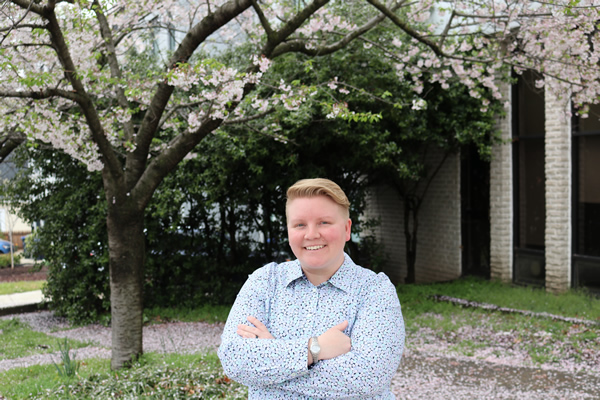
Occupation: Minority Veterans of America
Where do you live? Ward 5
What does being a queer woman in Washington, D.C. mean to you?
Being a queer woman in D.C., our nation’s capital gives me the opportunity to mentor folks not just within our LGBTQ+ community but those outside of our community. I’m able to have conversations with people from all spectrums, change hearts and minds. I’m also able to open the door for the voiceless so that they can be seen and heard in the room. I’m able to cross lines and push boundaries so those coming behind me are able to live more as their true selves.
Olivia O’Neal
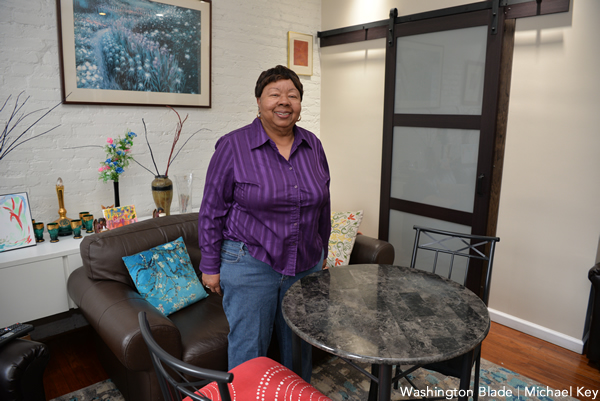
Occupation: IONA, WWH, Mary’s House for Older Adults, DACL, Seabury Resources for Aging
Where do you live? Ward 6
What does being a queer woman in Washington, D.C. mean to you?
Being a queer woman in D.C. means that I can advocate for all women’s rights no matter what their sexual orientation may be.
Jade Flower

Where do you live? Ward 7
What does being a queer woman in Washington, D.C. mean to you?
Being a queer woman in D.C. means being a part of rich legacy — generations of Black lesbians in Washington have made this city a safe, inclusive and celebratory place. I grew up here, had my first kiss on a front porch off Nannie Helen. My first Pride (before I was out), I wore a different rainbow color every day of the week. My first party experiences were at the Edge and the Delta. My first time on a board was with Women in the Life Association. I screened my first film at HRC headquarters. I hope to continue to honor a tradition of so much self-love that it effortlessly pours into the LGBT community and allies alike.
Adalphie Johnson Wilhite
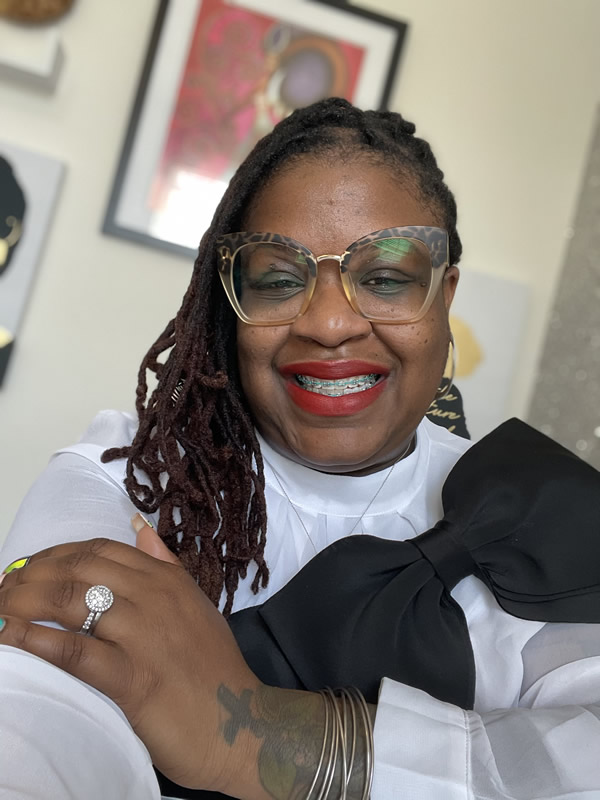
Occupation: SMYAL – Programs Director, The Community Church of Washington DC UCC – Assist. Pastor, Mx. Boss Lady Enterprises – Founder/Consultant
Where do you live? Ward 8
What does being a queer woman in Washington, D.C. mean to you?
Being a Queer Womxn in the DMV to me means, having the knowledge, courage, and ability to be and create agents of change in the community in all of my queerness. As a Black, queer woman, mother, wife, leader, and pastor I recognize many spaces are not affirming of my identities. In knowing that, it is my responsibility to be unapologetic about my identities while speaking truth to power and empowering others to live in their authentic truth. Being a queer womxn means penetrating spaces, and holding leadership positions that historically have been held by male-identified persons while also carving spaces of our own. It is our responsibility to be visible in responding to the injustices that plague our communities in an effort to build a better present and future. Being a Queer Womxn in the DMV means to be proud, passionate, caring, unapologetic, fierce, and in the words of the beloved Audrey Lorde, deliberate and afraid of nothing.
Alexis Grady
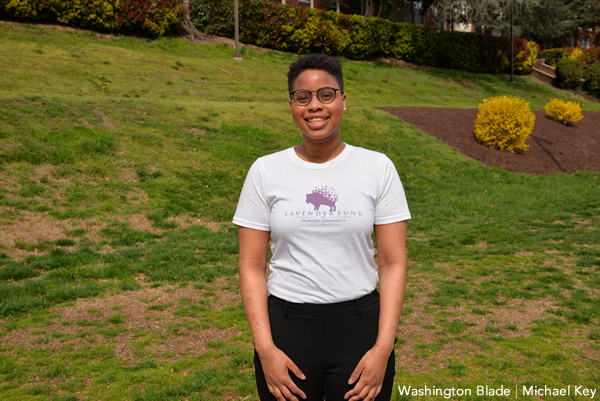
Occupation: Law Student
What does being a queer woman in Washington, D.C. mean to you?
Being a queer non-binary person in Washington, D.C. has been an incredible and enlightening experience. The protections and opportunities afforded to me as a queer person in this city have allowed me to live more openly than I ever anticipated, and to be a fierce advocate for people in the LGBTQ community. From interning with the Victory Institute to serving as the president of Howard University’s CASCADE, my interactions with our community here have been overwhelmingly meaningful and positive. The protections and support for queer people, particularly women and non-binary people of color, are a large part of the reason I have chosen to make Washington, D.C. my permanent home. I am so grateful to be considered among the women and queer people who have made it possible for me to survive and thrive. Being a queer non-binary person in Washington, D.C. means being a step closer to freedom and being wrapped in the support of my community at all times.
Elizabeth Birch

Occupation: VP CBRE and CEO Elizabeth Birch Company
What does being a queer woman in Washington, D.C. mean to you?
Being a lesbian or anyone on the LGBTQ spectrum in Washington, D.C. is a gift. It gives you a perspective on humanity that might elude you in a purely straight world.
Yvonne Z. Smith
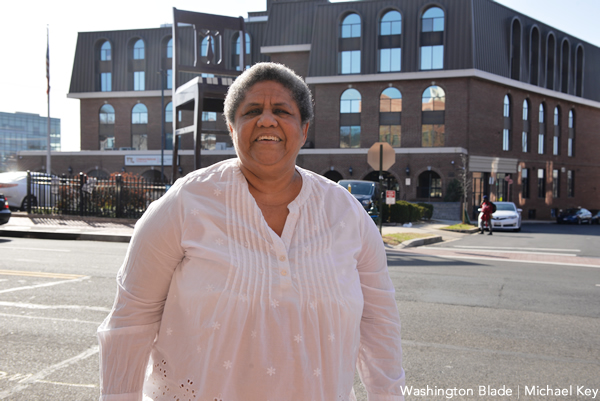
Occupation: Disability and Mental Health Advocate
What does being a queer woman in Washington, D.C. mean to you?
Being an out queer woman in D.C. allows me a amount of personal and emotional freedom. Although it’s been decades since I opened those closet doors it’s still refreshing not to be anything other than who I am. The Washington region is best place to work or play for any age of queer women. Although it still has some significant challenges that I work on through many LGBT organizations as well as disability organizations in the city I have never had to hide who I am or not advocate for all segments of the community I am a part of, including the Queer community.
Kisha Allure

Occupation: Director of Victim Services/Resilient Development, Casa Ruby
What does being a queer woman in Washington, D.C. mean to you?
As a Queer woman, I have been classified as the unexplained subject of a marginalized population. However, As Queer Woman I will continue to stand in my truth. Living the way I feel, from the inside out. I will walk, work, and experience equal opportunity as every human being. I will continue to bridge the gaps and create systems of tangible resources, for all genders to access, which is the biggest barrier in the LGBTQ community.
a&e features
Doug Spearman takes his chance
‘Noah’s Arc: The Movie’ debuted on Paramount+ last month

There’s no question that when Patrik-Ian Polk’s series “Noah’s Arc” premiered on Logo 20 years ago, it was a groundbreaking creation. The story of a group of Black gay men and their wonderful friendship. The titular arc was that of the cute main character, Noah (Darryl Stephens), and his close-knit circle of friends, including Chance played by gay actor Doug Spearman. This compelling and loving fraternity may, in fact, be what brought viewers back repeatedly, including a 2008 movie, “Noah’s Arc: Jumping the Broom,” as well as the 2020 “Noah’s Arc” short, and now, a new full-length feature “Noah’s Arc: The Movie,” debuting on Paramount+ on June 20. In the movie, filled with equal measures of laughs and tears, Chance, who has faced a devastating loss, finds his dependable friends there, ready to support and comfort him at a moment’s notice. I had the pleasure of speaking with Spearman the morning of the streaming premiere of “Noah’s Arc: The Movie.”
WASHINGTON BLADE: Doug, since the early 2000s, when the “Noah’s Arc” series premiered on Logo, you have been playing the character of Chance, including in the latest installment, “Noah’s Arc: The Movie.” What was it about Chance that appealed to you as an actor?
SPEARMAN: When Patrik (-Ian Polk) called me to ask me to play him (Chance), I was at JFK airport in the baggage claim, waiting for a suitcase. He explained what the part was. The thing that stuck out to me was the fact that Chance was in a long-term relationship with another Black man. And, they had a child; they had a 4-year-old daughter named Kenya. I had never seen two Black gay men raise a child on TV before. I thought it was the most revolutionary thing I’d ever seen. I immediately thought I’ve got to do this because that was something nobody had seen. I thought it was incredibly important to take the part.
BLADE: “Noah’s Arc: The Movie” was, once again, written and directed by Patrik-Ian Polk, who you just mentioned, is the creator of the entire franchise. What’s the secret to your long-standing working relationship?
SPEARMAN: [Laughs] the whole team, all of us, are like a band of brothers. We fight like brothers, we come together like brothers, we hash things out, we talk, because we’re all very different from our characters. I think the challenge of playing these guys and then uplifting these men, playing a part, especially something written by Patrik, is like solving a math equation. There’s always a challenge that’s enjoyable for me as an actor: to try to find out what it is that Patrik wants, and then how do I do it.
BLADE: I think you do a very good job of it.
SPEARMAN: Thank you very much
BLADE: In the years between “Jumping the Broom” and the new full-length movie, many changes have occurred, and the story addresses some of them, including gay widowhood, which is something that the aging community is now confronting, as well as mental health issues. Please say a few words about how you approached those subjects in the new movie.
SPEARMAN: I had a lot of loss in my life, right before we started shooting. Two months before we started shooting the first series, my mother died. I was going through the grief process through that whole first season. Since then, I’ve lost a lot of people in my life. In fact, when we started shooting the second season, the second week we were shooting, my ex died of a heart attack. I was having to fold that into what I was doing with my life on the set and off the set. You’ve got to show up and you’ve got to do your work. The first two seasons of “Noah’s Arc” are always tinged with the memory of grief. So, when I had to deal with the death that Chance faces (in the new movie), which is a significant death in his life, it wasn’t that hard to reach back, especially the scene in the graveyard. It was something that I unfortunately could pull from personal experience.
BLADE: Shifting gears, the movie features delightful cast surprises, including Jasmine Guy and TS Madison. Did you have a chance to interact with either or both when they were on set?
SPEARMAN: No, I didn’t have any scenes with Jasmine, and I missed her. I wish I had gotten to see her because I actually got to direct Jasmine for a CBS promo shoot for “Queen,” back in the early ‘90s. I had a huge crush on her when she was on “A Different World.” So, I really would have liked to reconnect. But TS and I got to see each other every day because I was in all her scenes. It was extraordinary being around somebody like that. That is one outspoken woman!
BLADE: Even though Beyoncé never makes an appearance in the movie, there’s a lot of talk about her. Would you say you are a Beyoncé fan?
SPEARMAN: Yes! I’m breathing! Yes, I’m a Beyoncé fan. I actually got the chance to meet her. I knew her mom. Her mom was extraordinary to me. She is in the second movie I directed. She also gave us a wedding gown to use in the very first scene of the movie. That family is extraordinarily important to me. Not only just to be a fan, but to be somebody who’s gotten to know them and work with them and see how hard they work. I don’t think anybody works as hard as Tina or Beyoncé.
BLADE: There was a recent news item about gay actor Benito Skinner of the Amazon Prime series “Overcompensating” being told not to bother auditioning for straight roles. As an out actor yourself, how important do you think it is for queer characters to be portrayed by queer actors, and vice versa?
SPEARMAN: Being queer is a multifaceted identity. There’s no one kind of queer person. I think finding the best actor that’s your first circle of casting. I think one of the joys about being an actor is that you get to play different parts. I play straight guys all the time. Dads and husbands and things like that. I think a lot of people are told not to do it. In fact, I wouldn’t be Chance if the actor who was originally cast as Chance hadn’t been pulled out of the series by his agents because they didn’t want him to play a gay character.
BLADE: That’s amazing! Thank you for sharing that. Without giving away too much, the ending of the movie is a little ambiguous, even ending with a question mark. If there was a “Noah’s Arc: The Movie” sequel, would you come back for that?
SPEARMAN: Yeah! A lot of it would depend on what Chance’s journey is going to be like. Patrik and I have conversations like that all the time. He’s very interested and supportive of input. I hope I would be, as we all would be, part of the creative growth with these characters. They live in Patrik’s head, and he writes them, but we’re the ones who have to flesh them out. It’s a conversation, it’s always a conversation.
BLADE: You are currently performing in Molière’s “The Imaginary Invalid” as part of the New Orleans Shakespeare Festival at Tulane. What has this experience been like for you?
SPEARMAN: It’s extraordinary! I started on stage when I was seven. There’s nothing like working with a live audience and having that immediacy. I’m working with an extraordinarily talented cast in a really great play, and I have some of the best scene partners I could ever want.
BLADE: Are there any upcoming film or TV projects you’d like to mention?
SPEARMAN: I’m still a writer, and I’m still a director, and I’ve still got scripts that I would like to make. I have a little something that’s a cross between “Treme” and “Bridgerton” that I want to do. I’m always trying to figure out what the next thing is.
a&e features
Visit Cambridge, a ‘beautiful secret’ on Maryland’s Eastern Shore
New organization promotes town’s welcoming vibe, LGBTQ inclusion

CAMBRIDGE, Md. — Driving through this scenic, historic town on Maryland’s Eastern Shore, you’ll be charmed by streets lined with unique shops, restaurants, and beautifully restored Victorian homes. You’ll also be struck by the number of LGBTQ Pride flags flying throughout the town.
The flags are a reassuring signal that everyone is welcome here, despite the town’s location in ruby red Dorchester County, which voted for Donald Trump over Kamala Harris by a lopsided margin. But don’t let that deter you from visiting. A new organization, Proudly Cambridge, is holding its debut Pride event this weekend, touting the town’s welcoming, inclusive culture.
“We stumbled on a beautiful secret and we wanted to help get the word out,” said James Lumalcuri of the effort to create Proudly Cambridge.
The organization celebrates diversity, enhances public spaces, and seeks to uplift all that Cambridge has to share, according to its mission statement, under the tagline “You Belong Here.”
The group has so far held informal movie nights and a picnic and garden party; the launch party is June 28 at the Cambridge Yacht Club, which will feature a Pride celebration and tea dance. The event’s 75 tickets sold out quickly and proceeds benefit DoCo Pride.
“Tickets went faster than we imagined and we’re bummed we can’t welcome everyone who wanted to come,” Lumalcuri said, adding that organizers plan to make “Cheers on the Choptank” an annual event with added capacity next year.
One of the group’s first projects was to distribute free Pride flags to anyone who requested one and the result is a visually striking display of a large number of flags flying all over town. Up next: Proudly Cambridge plans to roll out a program offering affirming businesses rainbow crab stickers to show their inclusiveness and LGBTQ support. The group also wants to engage with potential visitors and homebuyers.
“We want to spread the word outside of Cambridge — in D.C. and Baltimore — who don’t know about Cambridge,” Lumalcuri said. “We want them to come and know we are a safe haven. You can exist here and feel comfortable and supported by neighbors in a way that we didn’t anticipate when we moved here.”
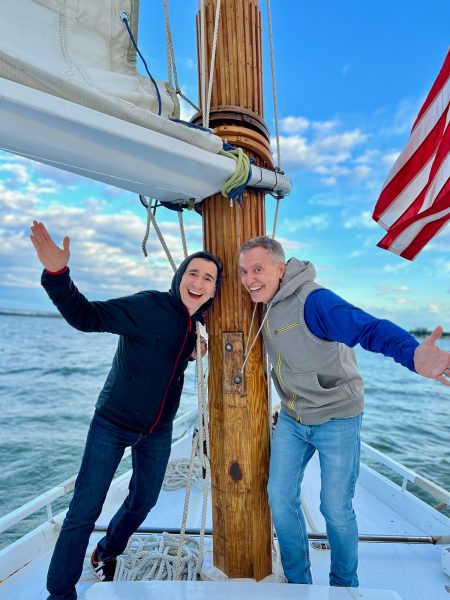
Lumalcuri, 53, a federal government employee, and his husband, Lou Cardenas, 62, a Realtor, purchased a Victorian house in Cambridge in 2021 and embarked on an extensive renovation. The couple also owns a home in Adams Morgan in D.C.
“We saw the opportunity here and wanted to share it with others,” Cardenas said. “There’s lots of housing inventory in the $300-400,000 range … we’re not here to gentrify people out of town because a lot of these homes are just empty and need to be fixed up and we’re happy to be a part of that.”
Lumalcuri was talking with friends one Sunday last year at the gazebo (affectionately known as the “gayzebo” by locals) at the Yacht Club and the idea for Proudly Cambridge was born. The founding board members are Lumalcuri, Corey van Vlymen, Brian Orjuela, Lauren Mross, and Caleb Holland. The group is currently working toward forming a 501(c)3.
“We need visibility and support for those who need it,” Mross said. “We started making lists of what we wanted to do and the five of us ran with it. We started meeting weekly and solidified what we wanted to do.”
Mross, 50, a brand strategist and web designer, moved to Cambridge from Atlanta with her wife three years ago. They knew they wanted to be near the water and farther north and began researching their options when they discovered Cambridge.
“I had not heard of Cambridge but the location seemed perfect,” she said. “I pointed on a map and said this is where we’re going to move.”
The couple packed up, bought a camper trailer and parked it in different campsites but kept coming back to Cambridge.
“I didn’t know how right it was until we moved here,” she said. “It’s the most welcoming place … there’s an energy vortex here – how did so many cool, progressive people end up in one place?”
Corey van Vlymen and his husband live in D.C. and were looking for a second home. They considered Lost River, W.Va., but decided they preferred to be on the water.
“We looked at a map on both sides of the bay and came to Cambridge on a Saturday and bought a house that day,” said van Vlymen, 39, a senior scientist at Booz Allen Hamilton. They’ve owned in Cambridge for two years.
They were drawn to Cambridge due to its location on the water, the affordable housing inventory, and its proximity to D.C.; it’s about an hour and 20 minutes away.
Now, through the work of Proudly Cambridge, they hope to highlight the town’s many attributes to residents and visitors alike.
“Something we all agree on is there’s a perception problem for Cambridge and a lack of awareness,” van Vlymen said. “If you tell someone you’re going to Cambridge, chances are they think, ‘England or Massachusetts?’”
He cited the affordability and the opportunity to save older, historic homes as a big draw for buyers.
“It’s all about celebrating all the things that make Cambridge great,” Mross added. “Our monthly social events are joyful and celebratory.” A recent game night drew about 70 people.
She noted that the goal is not to gentrify the town and push longtime residents out, but to uplift all the people who are already there while welcoming new visitors and future residents.
They also noted that Proudly Cambridge does not seek to supplant existing Pride-focused organizations. Dorchester County Pride organizes countywide Pride events and Delmarva Pride was held in nearby Easton two weeks ago.
“We celebrate all diversity but are gay powered and gay led,” Mross noted.
To learn more about Proudly Cambridge, visit the group on Facebook and Instagram.
What to see and do
Cambridge, located 13 miles up the Choptank River from the Chesapeake Bay, has a population of roughly 15,000. It was settled in 1684 and named for the English university town in 1686. It is home to the Harriet Tubman Museum, mural, and monument. Its proximity to the Blackwater National Wildlife Refuge makes it a popular stop for birders, drawn to more than 27,000 acres of marshland dubbed “the Everglades of the north.”
The refuge is walkable, bikeable, and driveable, making it an accessible attraction for all. There are kayaking and biking tours through Blackwater Adventures (blackwateradventuresmd.com).
Back in town, take a stroll along the water and through historic downtown and admire the architecture. Take in the striking Harriet Tubman mural (424 Race St.). Shop in the many local boutiques, and don’t miss the gay-owned Shorelife Home and Gifts (421 Race St.), filled with stylish coastal décor items.
Stop for breakfast or lunch at Black Water Bakery (429 Race St.), which offers a full compliment of coffee drinks along with a build-your-own mimosa bar and a full menu of creative cocktails.
The Cambridge Yacht Club (1 Mill St.) is always bustling but you need to be a member to get in. Snapper’s on the water is temporarily closed for renovations. RaR Brewing (rarbrewing.com) is popular for craft beers served in an 80-year-old former pool hall and bowling alley. The menu offers burgers, wings, and other bar fare.
For dinner or wine, don’t miss the fantastic Vintage 414 (414 Race St.), which offers lunch, dinner, wine tasting events, specialty foods, and a large selection of wines. The homemade cheddar crackers, inventive flatbreads, and creative desserts (citrus olive oil cake, carrot cake trifle) were a hit on a recent visit.
Also nearby is Ava’s (305 High St.), a regional chain offering outstanding Italian dishes, pizzas, and more.
For something off the beaten path, visit Emily’s Produce (22143 Church Creek Rd.) for its nursery, produce, and prepared meals.
“Ten minutes into the sticks there’s a place called Emily’s Produce, where you can pay $5 and walk through a field and pick sunflowers, blueberries, you can feed the goats … and they have great food,” van Vlymen said.
As for accommodations, there’s the Hyatt Regency Chesapeake Bay (100 Heron Blvd. at Route 50), a resort complex with golf course, spa, and marina. Otherwise, check out Airbnb and VRBO for short-term rentals closer to downtown.
Its proximity to D.C. and Baltimore makes Cambridge an ideal weekend getaway. The large LGBTQ population is welcoming and they are happy to talk up their town and show you around.
“There’s a closeness among the neighbors that I wasn’t feeling in D.C.,” Lumalcuri said. “We look after each other.”
a&e features
James Baldwin bio shows how much of his life is revealed in his work
‘A Love Story’ is first major book on acclaimed author’s life in 30 years
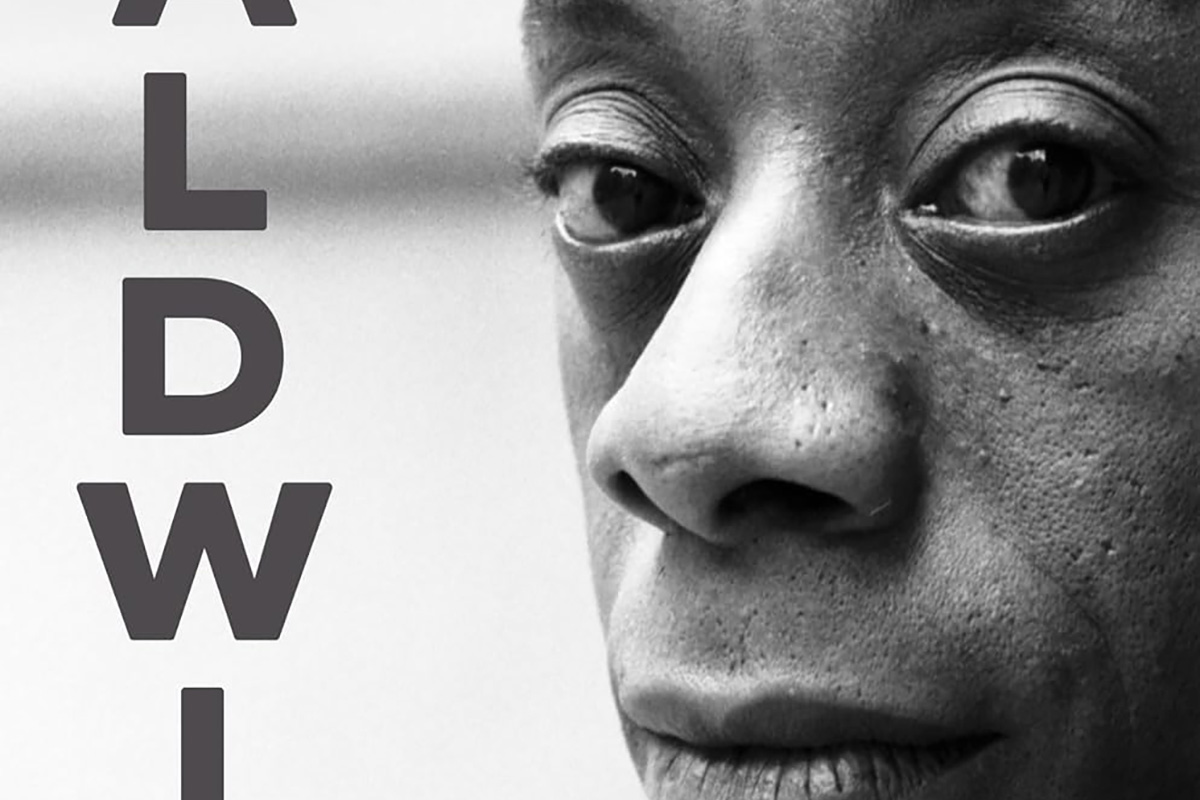
‘Baldwin: A Love Story’
By Nicholas Boggs
c.2025, FSG
$35/704 pages
“Baldwin: A Love Story” is a sympathetic biography, the first major one in 30 years, of acclaimed Black gay writer James Baldwin. Drawing on Baldwin’s fiction, essays, and letters, Nicolas Boggs, a white writer who rediscovered and co-edited a new edition of a long-lost Baldwin book, explores Baldwin’s life and work through focusing on his lovers, mentors, and inspirations.
The book begins with a quick look at Baldwin’s childhood in Harlem, and his difficult relationship with his religious, angry stepfather. Baldwin’s experience with Orilla Miller, a white teacher who encouraged the boy’s writing and took him to plays and movies, even against his father’s wishes, helped shape his life and tempered his feelings toward white people. When Baldwin later joined a church and became a child preacher, though, he felt conflicted between academic success and religious demands, even denouncing Miller at one point. In a fascinating late essay, Baldwin also described his teenage sexual relationship with a mobster, who showed him off in public.
Baldwin’s romantic life was complicated, as he preferred men who were not outwardly gay. Indeed, many would marry women and have children while also involved with Baldwin. Still, they would often remain friends and enabled Baldwin’s work. Lucien Happersberger, who met Baldwin while both were living in Paris, sent him to a Swiss village, where he wrote his first novel, “Go Tell It on the Mountain,” as well as an essay, “Stranger in the Village,” about the oddness of being the first Black person many villagers had ever seen. Baldwin met Turkish actor Engin Cezzar in New York at the Actors’ Studio; Baldwin later spent time in Istanbul with Cezzar and his wife, finishing “Another Country” and directing a controversial play about Turkish prisoners that depicted sexuality and gender.
Baldwin collaborated with French artist Yoran Cazac on a children’s book, which later vanished. Boggs writes of his excitement about coming across this book while a student at Yale and how he later interviewed Cazac and his wife while also republishing the book. Baldwin also had many tumultuous sexual relationships with young men whom he tried to mentor and shape, most of which led to drama and despair.
The book carefully examines Baldwin’s development as a writer. “Go Tell It on the Mountain” draws heavily on his early life, giving subtle signs of the main character John’s sexuality, while “Giovanni’s Room” bravely and openly shows a homosexual relationship, highly controversial at the time. “If Beale Street Could Talk” features a woman as its main character and narrator, the first time Baldwin wrote fully through a woman’s perspective. His essays feel deeply personal, even if they do not reveal everything; Lucian is the unnamed visiting friend in one who the police briefly detained along with Baldwin. He found New York too distracting to write, spending his time there with friends and family or on business. He was close friends with modernist painter Beauford Delaney, also gay, who helped Baldwin see that a Black man could thrive as an artist. Delaney would later move to France, staying near Baldwin’s home.
An epilogue has Boggs writing about encountering Baldwin’s work as one of the few white students in a majority-Black school. It helpfully reminds us that Baldwin connects to all who feel different, no matter their race, sexuality, gender, or class. A well-written, easy-flowing biography, with many excerpts from Baldwin’s writing, it shows how much of his life is revealed in his work. Let’s hope it encourages reading the work, either again or for the first time.

